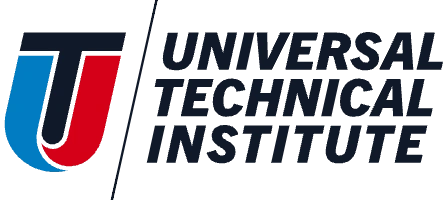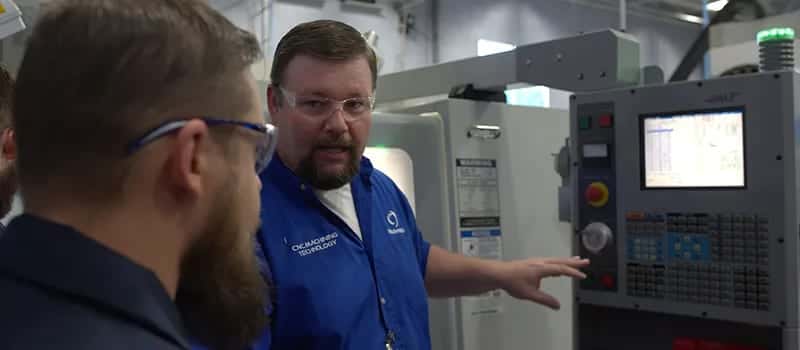When you’re applying for jobs in CNC machining, your resume is an important document that can help make a good first impression with an employer. It’s important that you take your time when putting one together and to include all the relevant information prospective employers are looking for.
Employers want to see a snapshot of your job history, relevant skills and education to help determine if you’re the right fit for the job. If you’re putting together your resume for the first time or looking to improve on your existing one, the tips in this guide can help!
Writing Your CNC Machinist Resume
Before starting a job search, having a resume will help ensure you start on the right foot with potential employers. You want to make a good first impression!
Keep in mind that your CNC machinist resume is something that will change over time as you hold different positions and gain new experience. Updating and improving your resume periodically is necessary so it can reflect the most current version of your work history.
Applying for jobs is a process that can be competitive. Having a resume that features a professional and streamlined layout combined with the right content can help make you stand out.
Sections to Include
Resumes are always going to be structured a little differently depending on the job they’re tailored to and the skills and experience being featured. Here are several sections that all resumes should include:
Objective or Summary
The beginning of your resume should feature either an objective or a summary, depending on what kind of skills and previous experience you have.
A resume objective is something you should use when you have little to no professional experience. This helps identify who you are and what career goals you have for the future.
An example might sound something like, “Universal Technical Institute graduate seeking full-time employment with Mastercam. Seeking an entry-level position as a CNC machinist that will allow me to use education and experience acquired. Skills include using CAD/CAM software and milling equipment.”
A resume summary would be used for those who have previous CNC machining experience in a professional work environment. It should highlight past skills and CNC jobs that show why you’re a great candidate for the new position.
An example summary might say, “CNC machinist with three years of experience working for Roush Yates. Helped improve efficiency levels by 15% and managed team of 10. Seeking to use leadership skills to manage large-scale projects.”
The summary should include your years of professional experience and mention notable duties and on-the-job skills. It can also feature related skills and certifications.

Whether you choose an objective or a summary, keeping either to around three sentences in length is usually best to ensure you’re being concise.
Professional Experience
This part of your resume highlights past job experience or relevant experience to show how you would be a good choice for the job opening. For each position, it’s important to include the following:
- Company name
- Title/position held
- Dates worked (example: May 2019 to February 2020)
- Job duties and accomplishments
Be sure to list these positions in descending chronological order, starting with your most recent position. Remember to be concise — include relevant information with consideration for length.
If you are still in school or haven’t had much work experience, that’s OK. We all have to start somewhere!
In place of professional experience, you can include personal projects you’ve worked on at school, volunteer work and apprenticeship experience. Be specific when talking about these projects and how they are relevant to the job you’re applying for in the CNC machining industry.
Education
Having your education and training listed on your resume is extremely important. Employers are looking to see how your background can help you in the job. This is where you’d list:
- School(s) you’ve attended
- Graduation year (or anticipated year)
- Program(s) completed
- GPA (optional)
You can also list additional certifications in this section, like ones obtained from the National Institute for Metalworking Skills (NIMS). Listing these, if applicable, can be one more thing that sets you apart from other CNC job applicants.
Expanding on this section can be helpful if you don’t have a lot of professional experience or if you’re a recent graduate. For example, as a Universal Technical Institute CNC Machining Technology program graduate, you could list individual courses you took during the program that are relevant to the position.
Arlyn Davis, director of Career Services at UTI Mooresville, recommends that students provide a link to the CNC program page when submitting a resume online.
“This way, employers can look and see what was learned in each individual course,” he says. “There are a ton of different roles in a manufacturing plant, so students could potentially fit into a range of roles based on the experience they have gained from UTI.”
Relevant Skills
This section of your resume can be tailored to fit the specific job you’re applying for. Paying close attention to the job description can help you when writing this section. If you’re applying for a management role, for example, be sure to talk about your leadership and organizational skills.
Skills can include everything you’re able to do based on your training and experience. Additional CNC machining skills might include machinery operation, assembly protocols, utilizing computer-aided design (CAD) and computer-aided manufacturing (CAM) software, and reading blueprints.
Awards and Accomplishments
If there are any awards and accomplishments that you feel could benefit you in the specific role you’re applying for, you can have a small section for this on your resume. Awards worth noting might include being recognized as employee of the month or having perfect attendance. Be sure to include the title of the award and the date!
Contact Information
Including your contact information is a vital step so the employer can reach out to you! While this is a simple section to put together, make sure the information you provide is accurate. The following should be listed:
- First and last name
- Address
- Phone number
- Email address
- LinkedIn profile URL (optional)
Design Tips
Now that you know what content should be included on your resume, it’s important to consider the design and layout. Keeping your resume simple and streamlined is the best way to go so it’s easy to read.

It’s also good to keep your resume to one page in length, if possible. The more concise the better, as employers are often poring over numerous resumes to decide whom to call in for an interview.
There are plenty of design templates you can download from online resources, including:
Microsoft Word also has resume templates. Sticking with neutral colors and a legible font when designing your resume is key. Also be sure to spellcheck your resume thoroughly before finalizing it!
Viewing machinist resume examples can be helpful when making one of your own. With a quick Google search, you can find several CNC machinist resume samples to look at, but here’s one for quick reference: https://www.myperfectresume.com/resume/examples/metal-work/computer-numerical-control-machinist
Writing a Cover Letter
Along with a resume, most employers also require an accompanying cover letter (CV) when you apply for an open position.
Your resume gives a general overview of your experience, while a cover letter is an opportunity to expand on your resume and connect on a more personal level with a prospective employer.
The most important thing to keep in mind is to make the letter apply specifically to the job you’re interested in. Working off a template can be a great start, but make sure to customize the letter so it discusses why you’d be a good fit for that specific position.
A cover letter for a CNC machinist position might look like this: https://www.greatsampleresume.com/cover-letter/examples/production/cnc-machinist
Keep in mind that your cover letter and resume are important documents that can help you to make a first impression with the employer. Taking the time to put them together properly and checking them for accuracy can help you feel confident when you’re contacted for an interview.
Davis adds that “[Your] resume is the way to get the door open. When you get in front of the employer is when you sell yourself.”
Prepare for a Career as a CNC Machinist at UTI
In just 36 weeks, the CNC Machining Technology program offered at our campus in Mooresville, North Carolina, can help you learn the skills needed to prepare for an entry-level career in the CNC machining field.1
Students learn with the most current technology and programming thanks to a relationship between UTI and Roush Yates, a leading brand in the performance industry.
CNC machinist training could open opportunities in a number of fields, ranging from transportation to aerospace. If this sounds like the right career path for you, request more information here to get in touch with an Admissions Representative.
Campuses That Offer CNC Training
Universal Technical Institute of Illinois, Inc. is approved by the Division of Private Business and Vocational Schools of the Illinois Board of Higher Education.

